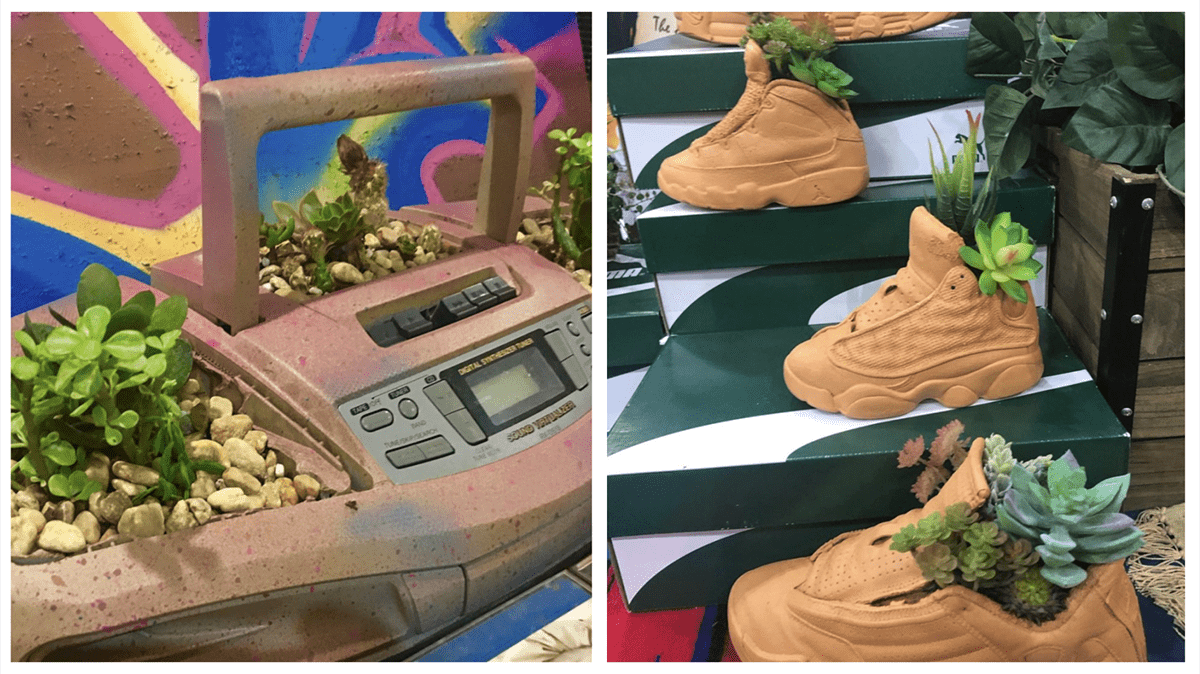Creativity is born of necessity. At least, that’s what Jerald “Levar” Robinson, a middle school teacher in the Atlanta, GA area, believes. We’re all familiar with the concept of creativity. It’s an essential component of art. We challenge our students to be creative in their artmaking, foster creative thinking and collaboration, and facilitate discussions on creativity in art appreciation and analysis. Even in our personal studio practices this summer, we’re striving to be creative after a draining school year.
But have you ever considered what creates creativity?
Growing up, Levar and his eight siblings didn’t have much. They didn’t have a TV, cell phones, or video games. They had to use whatever they had to entertain themselves and make art. His mom’s motto was, “Make do with what you got!”

As a result, they were never bored! And all eight siblings are highly creative today. Despite not having much, they always had pencils, paper, and other materials they could manipulate. Levar and his siblings realized they could paint and draw on any surface to transform it.
Creativity is a verb.
This discovery has shaped how Levar approaches creativity and artmaking with his students today, with the all too familiar combination of a minuscule budget and large class sizes. Levar defines creativity to his students as, “Taking the first thoughts on your mind and turning them into something you can touch.” Creativity is more than sitting there thinking or Googling quick solutions. It’s not quitting after something gets “messed up.” It’s about the follow-through and execution.
Creativity is a lesson in being fearless. Students see famous people as an iceberg: they only see the success or the tip of the iceberg above the water. No one sees the failures, mistakes, sleepless nights, and tears underneath the surface. Encourage students to be resilient and work through a problem until they find another way that works. Then, empower them to do it.

Levar gives seven tips on how to nurture creativity in your students this upcoming year.
1. Embrace your situation and make the most of it.
Don’t let the low budget and large class sizes overwhelm you or make you bitter. Sure, it’s not right and you should advocate for more, but until then, this is what you’ve got. Shift your perspective from what you don’t have to the opportunities you do have to be innovative and resourceful.
2. Connect with the community for resources.
Reach out to your school community with a friendly email at the beginning of the year. Provide colleagues with a list of items you would love for them to save for you. Make it easy to drop off items with a bin in the teacher’s lounge or outside your classroom door. Talk with cafeteria and maintenance staff to get cardboard boxes and styrofoam packaging. Reach out to parents and provide them with a list of items to save and instructions on how to get them to you.
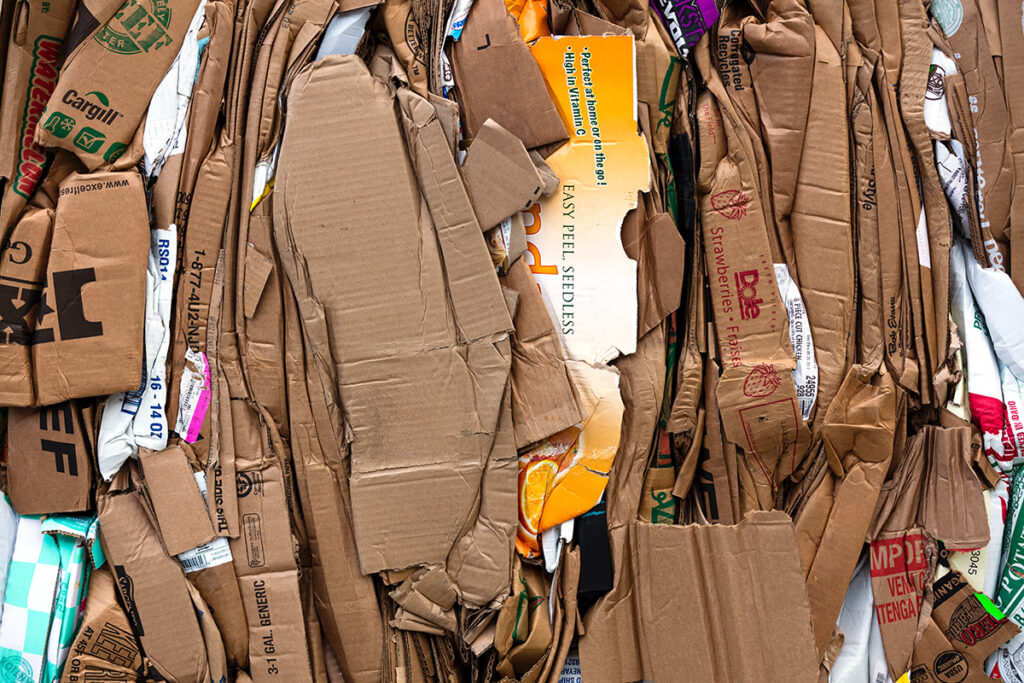
Contact local doctors’ offices to get outdated magazines from the waiting room. These make great paint palettes and materials to collage with. Connect with your local arts council to get donations for special community projects. Even big-box stores like Michaels or Hobby Lobby may be willing to offer your students a discount for supplies on your syllabus. Additionally, local thrift stores can donate surplus or items that haven’t sold.
Levar advises continuing to reach out during the school year to maintain the relationships and build up your hoard. Be sure to share photos of your students creating their final creations with your community partners! For more ways to collect resources, check out 7 Tips to Ensure You Get the Donations You Actually Want.
3. Create recycled art.
Use those community donations to create art. Let the items you receive dictate your lessons and what your students produce. This keeps your creative mind sharp and your lessons fresh. Levar gets tons of electronic donations. He has his students deconstruct the electronics and repurpose them into planters. Students also turn old shoes into fun planters too!
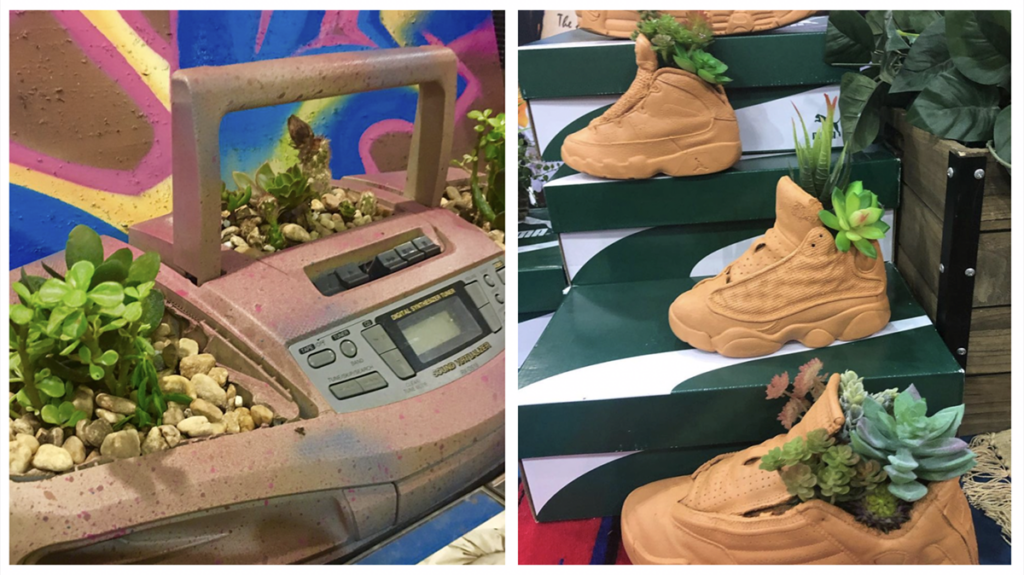
For more on these innovative recycled projects, make sure you register for the NOW Conference and sign up for Levar’s session, Everything is a Canvas. From Trash to Treasure: Using Donations to Make Incredible Art also has great ideas on artmaking with secondhand finds.
4. Paint on anything BUT a canvas.
All surfaces have the potential to be artwork, not just a traditional gessoed canvas on stretcher boards. Levar and his students love painting on shoes, shoe boxes, helmets, and phone cases. Combining students’ passions with artmaking invests them in the lesson. Levar creates original handpainted designs on shoes, which he uses as prizes to motivate his students. He also found that tying in graffiti art captivates students and showcases art on different surfaces.
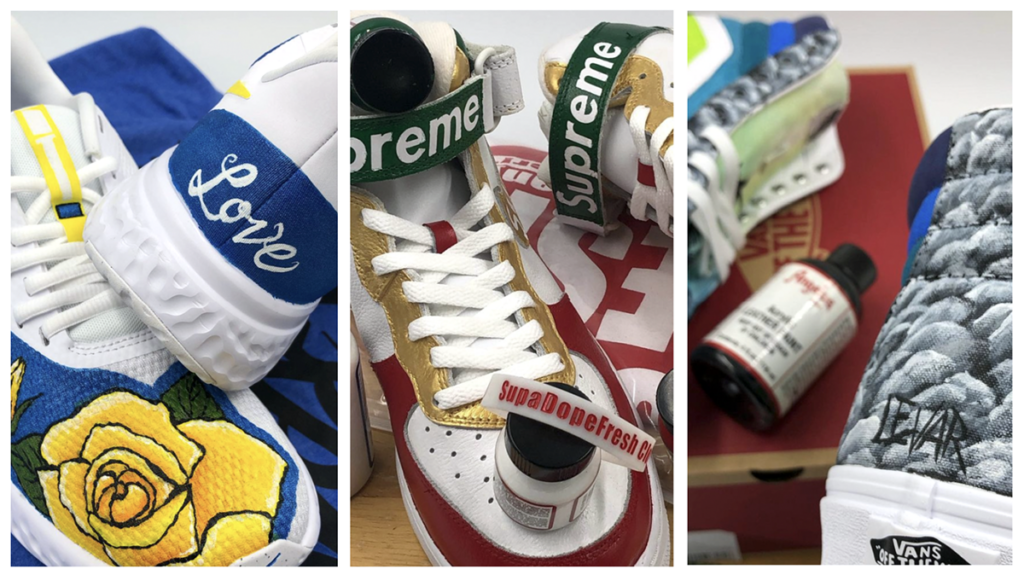
5. Provide local artists for students to connect with.
It’s great to show students famous artists, but local artists give students professionals in the field they can meet and have a dialogue with. Students have more accessibility to experience the art in person if it’s local rather than an expensive museum or in another country. Provide space in your lessons for students to look up local artists on their own. Students retain more when they take ownership of their learning.
6. Switch it up.
It’s good to try new artmaking to prevent boredom and stale lessons. This is a way you can model creativity for your students. It’s okay to not have everything figured out.
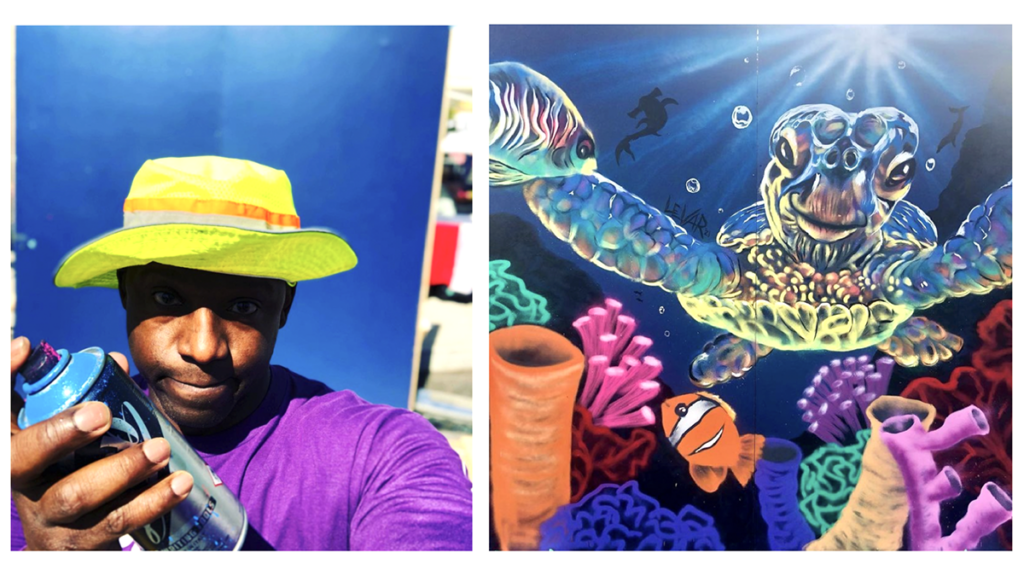
This can also be applied to your own artmaking. Levar is getting back into making his own artwork, and the process is helping to inform how he pushes students in the classroom to be innovative and have fun. If you’re easing back into your own artistic practice, check out AOEU’s new course, Rediscovering Your Artistic Identity.
7. Get students up and moving.
Students have grown up fixated on screens and they equate entertainment with engagement. Unfortunately, screens can kill creativity. How do we reach students who have short attention spans and crave quick stimulation? How do we keep them from being bored in our classrooms?
As Levar’s mom says, “Only boring people get bored!” Levar suggests getting students out of their seats and moving around the classroom. When students are physically moving, they’re less likely to feel bored and pull out their electronic devices. Hang reproductions of artwork on different sides of the room and divide the class into small groups.
Provide a collaborative activity, like the ones listed below, to get students talking to each other face-to-face.
- Squeeze Art History into Any Schedule with a 5 Minute Museum
- Helping Students Care About Art History
- When the Art History Carnival Comes to Town!
From the brief glimpse of Levar’s upbringing with limited resources and lack of electronic entertainment, we saw how creativity was born of necessity. As a middle school art teacher with a small budget and large class sizes, Levar applied his mom’s teaching of “making do with what he got.” He paired it with his tenacity for pushing through challenges to make lessons, like his recycled electronics and shoe planters, that students flip for!
If you want to gain more inspiring ideas from Levar, register for the NOW Conference today and watch his session, Everything is a Canvas. You’ll get several captivating ways to start the school year off with a little recycled art and an impressive dose of creative thinking. You might even find some inspiration for your own artmaking this summer.
What pushes you to be more creative in your artwork and teaching practices?
What are your favorite strategies for fostering creativity in your students?
Magazine articles and podcasts are opinions of professional education contributors and do not necessarily represent the position of the Art of Education University (AOEU) or its academic offerings. Contributors use terms in the way they are most often talked about in the scope of their educational experiences.
